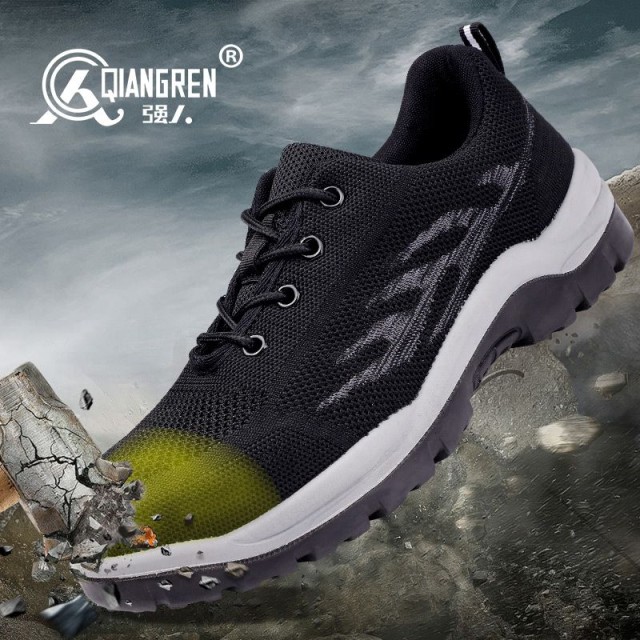Every year, workplace injuries cost industries millions in lost productivity—many stemming from inadequate footwear. The right work shoes act as your first line of defense, but decoding safety markings like SRA, SRB, or ASTM certifications can feel overwhelming. This guide cuts through the confusion, linking occupational hazards to the exact protections your shoes must provide.
Understanding Work Shoe Safety Markings
Key Symbols Decoded: From Antistatic to Heat Resistance
Safety shoes aren’t one-size-fits-all. Their markings indicate specialized protections:
- Antistatic (A): Essential for electronics or flammable environments to prevent static discharge.
- Heat-Resistant (HRO): Withstands brief contact with surfaces up to 300°C—critical for welding or foundries.
- Puncture-Resistant (P): Midsole guards against nails or sharp debris, common in construction.
Did you know? A shoe marked "WRU" offers water-resistant uppers, ideal for outdoor or wet conditions.
Anti-Slip Ratings Demystified: SRA, SRB, SRC in Practice
Slip resistance is governed by updated ISO 20345 standards:
- SR (formerly SRA/SRB): Now a unified baseline test on ceramic tiles with detergent.
- SR+ (optional): Enhanced grip on steel floors with glycerol, denoted by a grey square with an "R."
Example: Healthcare workers prioritize SR+ for slick hospital floors, while warehouse staff might opt for basic SR.
Selecting Shoes for Your Work Environment
Assessing Workplace Risks: Construction, Healthcare, and Industrial Use Cases
- Construction: Prioritize puncture resistance (P) and ankle support. A steel toe (SB) is standard, but composite toes reduce weight for all-day wear.
- Healthcare: Slip resistance (SR+) and fluid-repellent materials (WRU) prevent falls and contamination.
- Manufacturing: Electrostatic dissipation (ESD) protects sensitive equipment, while metatarsal guards shield against heavy impacts.
Pro Tip: Measure both feet at day’s end—swelling can affect fit.
Combining Protections: When to Prioritize Puncture Resistance vs. Waterproofing
- Oil rigs: Waterproofing (WRU) + slip resistance (SR+) outweighs puncture guards.
- Demolition sites: Puncture resistance (P) + steel toes (SB) take precedence.
Trade-off: Breathability often decreases with added protections. For hot environments, look for mesh linings.
Ensuring Compliance and Quality
How Safety Standards (ASTM/ISO) Govern Markings
- ASTM F2413: U.S. standard for impact/compression resistance (e.g., "I/75" = 75 ft-lb impact rating).
- ISO 20345: Global benchmark requiring toe caps to withstand 200 joules (about a 20kg object dropped from 1m).
Note: ASTM markings are stamped inside the tongue; ISO uses symbols on the sole.
Validating Claims: Certifications and Shoe Testing Methods
- Check for third-party labels like CE or ANSI.
- Field tests: Press the toe cap—it shouldn’t flex more than 5mm under pressure.
Red flag: Vague claims like "slip-resistant" without SR/SR+ markings lack verification.
Ready to equip your team with precision-matched safety footwear? 3515 partners with distributors and bulk buyers to deliver certified work shoes tailored to industry hazards—from anti-slip hospital clogs to rugged construction boots. [Contact us] to discuss volume solutions that reduce workplace risks without compromising comfort.
Final thought: The right safety shoes aren’t just PPE—they’re productivity tools engineered for the unseen hazards of your trade.
Products You Might Be Looking For:
Explore customizable safety footwear for workplace protection
Related Products
- Durable Leather Work Boots for Wholesale & Custom OEM Manufacturing
- Puncture-Resistant Velcro Safety Boots for Wholesale & Custom Manufacturing
- Customizable Anti-Smash Safety Boots for Wholesale & Private Label Manufacturing
- Wholesale Durable Safety Boots | Custom Steel Toe & Puncture-Resistant Manufacturing
- Wholesale Slip-On Safety Boots Manufacturer - Custom Puncture-Proof & Steel Toe
Related Articles
- How Job-Specific Work Boot Designs Enhance Safety and Efficiency
- How Lace-Up Work Boots Solve Workplace Safety Challenges
- How Heeled Work Boots Enhance Safety and Reduce Fatigue in High-Risk Jobs
- How TPU Soles Revolutionize Work Boot Performance: Safety, Durability & Cost Benefits
- How to Match Workplace Hazards to Safety Features in Work Shoes: A Risk-Based Selection Guide



















